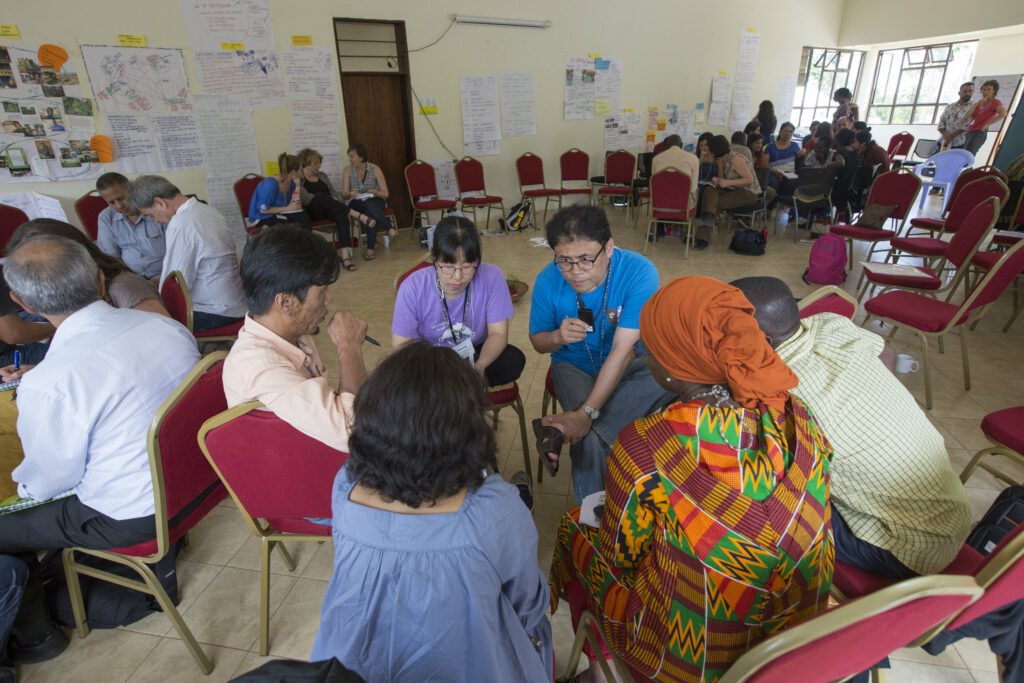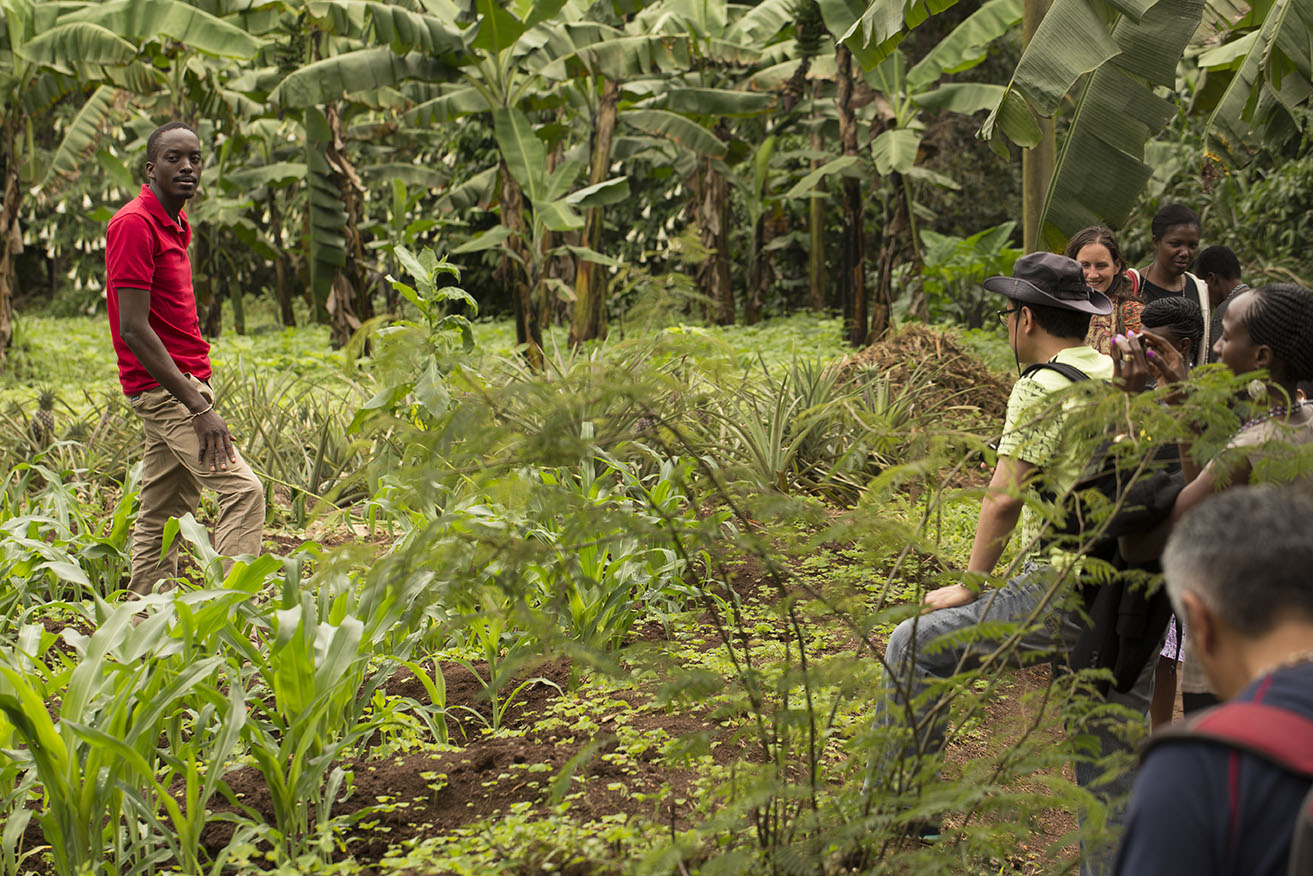This past spring I was fortunate to participate in the AgroEcology Fund’s learning convening in Masaka, Uganda. I saw how through careful collaboration, philanthropy can benefit and perhaps solve some of its own most fundamental problems by applying agroecological principles to organizational procedures. The term “agroecology” is a philosophy that encompasses virtually all aspects of life: food, culture, environment, justice, respect, tradition and future. Like a small-scale farm with mixed cropping in Uganda, the AgroEcology Fund seeks to operationalize the same principles of diversity, symbiosis and collaboration.
As in big business, philanthropic organizations often operate in a top-down, one-size-fits-all mode. When a solution is identified by science and research, these organizations may be driven by a well-intentioned impulse to apply the solution broadly, despite opposing ideas from those who are the focus of the aid. In retrospect, often, it becomes clear that the people who have intimate knowledge of their communities and ecosystems had the best ideas and solutions at the start.
For me, the clearest example of this in the United States is the restriction of controlled burning, despite Native Americans’ insistence that this practice was necessary. Now, after decades of telling the native people they were wrong, my home state of California is in a precarious position where our forests can burn with high-intensity crown fires, consuming forests and buildings. The best prevention of wildfire is now known to be low-intensity controlled burning, as traditional ecological knowledge guardians have long advocated.
In Uganda, I experienced how the AgroEcology Fund has learned from lessons like this one. It places trust in local ecological and social knowledge. The granting foundations aim to collaborate with, and learn from, grantees and advisors. Its structure is like an ecosystem where no species is in charge but all interact and adjust according to feedback.
For example, over the course of our days together in Uganda one discussion and activity built upon the previous and fed into the next. People were invited to give suggestions derived from their experiences as well as offer creative inspirations from the moment. The schedule was like a living thing that derived not from hierarchical, but rather lateral inputs from the diverse voices in the space. While people were still focused on structure, the structure was in service of connecting different ecological representatives to common causes, while respecting fundamental differences.

Choosing Uganda as the location of the convening was an example of the insight that can emerge from this sort of collaboration. It was surely difficult to choose the best host site when every country offers diverse social and ecological challenges, but thanks to the advice of the Alliance for Food Sovereignty in Africa (AFSA) this country, which stands at the edge of many possible futures, was chosen. Depending on parliamentary deliberations currently underway, Uganda could be among the pioneering nations, which reject GMOs, or they might let monocultures sweep their traditional farming techniques away. The soil is rich, and plants and animals prosper, but many people are in jail because of hunger.
Across the world, industrial agriculture has directly led to greater hunger. I was able to understand this in a personal and immediate way by listening to other participants at the learning exchange. Low-income families – when they can afford it – purchase hybrid and GMO seed to grow crops for export, creating a spiral of debt. This debt accumulates over time, making it harder and harder for them to feed their families. In addition to this debt spiral, the imported monocrops are susceptible to disease and collapse as climate change shifts the ecology.
As a part of the convening we visited farms that demonstrated a more ecological and resilient option than industrial monoculture. On these farms, families grow bananas, eating the fruits and feeding their animals on the spare roughage instead of planting a specific crop for the animals. Coffee is grown for the market, among other diverse medicinal and nutritious plants used for the family’s consumption. Insects and animals pollinate and aerate the soils for free. Families barter and trade heirloom seeds and breed them to adapt to their shifting environment.
Philanthropic organizations could also benefit from this sort of attention to diversity when fostering solutions to our social and ecological problems. It is true that the organizational manner of agroecological farming can feel complicated and messy. A truly collaborative model in philanthropic organizations can feel equally complicated. However, the results of such organizing principles are more resilient, healthy and stable. Monoculture in the farm and the board room is not the solution. The AgroEcology Fund, though relatively new, has already set out on an innovative course that could help move our agricultural and philanthropic systems toward more effective structures.
PC: Scott Fitzmorris
